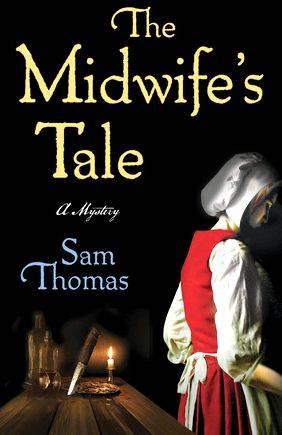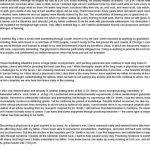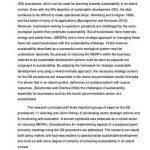Ulrich begins each chapter by transcribing a few entries from Martha’s diary, from the month and year listed in the chapter title. Ulrich follows these entries with an essay that further explains the entries’ details and relates the entries to what happened to Martha in the surrounding few years. Ulrich explains and builds on the entries with her own analysis, and she provides a wider historical context by drawing from documents such as town records and the diaries of Martha’s New England contemporaries.
Martha Moore was born in 1735 in the small town of Oxford, Massachusetts, to a well-educated family. She married Ephraim Ballard in 1754 and had her first child, Cyrus, two years later. She quickly had five more childrenfour daughters and one more sonbut lost three of the girls to a diphtheria epidemic in 1769. That same year, she gave birth to her fifth daughter, and her sixth followed two years later. In 1773, Ephraim traveled to Maine to find a new home for the family, finally settling in Hallowell and taking management of the mill and property owned by a British sympathizer who had fled to Canada. Martha and the children joined Ephraim there in October of 1777, and Martha officially delivered her first child as a midwife in July of 1778. Martha’s oldest daughter, Lucy, married her cousin Ephraim Towne that same year, and in 1799, Martha gave birth to her youngest son. She begins writing in her diary on January 1, 1785.
In August of 1787, Martha describes several events that give an overview of the many medically related tasks she is called on to perform, including delivering babies, answering false alarms, preparing bodies for burial, making medical calls, dispensing pills, and harvesting and preparing healing herbs.
Ulrich then gives an overview of homeopathic remedies of the time and the relationship between local healers and physicians. In September of 1788, Martha talks about the goods she and her daughters trade with local women and the help her daughters give her with the housework, particularly the weaving. Ulrich then discusses the gender-based division of duties, the female economic subsystem of the time period, and the importance of household help in a midwife’s career. In October of the following year, Martha’s family is forced to relocate when the mill’s original owner returns, and she discusses the difficulties of living so much closer to her neighbors. She also talks about being questioned when one of these new neighbors accuses a public official of rape. Ulrich offers a fuller historical account of the case and its participants.
In November of 1792, Martha’s niece, Parthenia Barton, who had been living with the family for some time, marries Shubael Pitts. Martha’s daughter Hannah marries Moses Pollard, the son of an old friend, Merriam Pollard, who often worked as a town nurse. Ulrich then describes traditional marriage practices in those days, including simple, work-intensive weddings and the fact that couples lived apart until they were able to set up a household. Martha also talks about being summoned to Sally Pierce’s delivery. Sally identified Martha’s son Jonathan as the father of her illegitimate baby and sued him for support, which he fulfilled by marrying her.

Ulrich then discusses the histories and results of other paternity suits from that time period. In November and December of 1793, Martha describes several complication-free deliveries she performs in the quiet period following the weddings. Ulrich expands upon this by explaining in more detail how these deliveries might have gone and comparing Martha’s success rate to other historical rates.
Martha’s youngest daughter, Dolly, marries Barnabas Lambard in May of 1795, and in Martha’s entries for January of the following year, the problem of housework has become dramatically larger now that she has no one at home to help her with it. In November of that year, Martha recounts that a band of armed men had attacked her husband while he attempted to complete a survey job. Ulrich adds further explanation, saying that poor settlers often saw surveyors as agents of richer men who were trying to take away the land that the settlers felt they had won for themselves. Even in these more difficult times, Martha’s medical involvement in the community still continues, and in February of 1801, Martha talks about tending to the death of her daughter-in-law’s nephew and being asked by the doctor to be an attendant at his dissection. Ulrich follows this with a more detailed look at the little boy’s history and offers a look at the changing relationship between doctors and midwives.
By March of 1804, Martha had grown weary, troubled by untrustworthy hired help, Jonathan’s often alcohol-induced temper, and Ephraim’s imprisonment for debt related to his job as a tax collector. Ulrich gives a more detailed picture of what Ephraim’s imprisonment would have been like, after which Martha describes the difficulties of being a woman on her own. Jonathan and his family move in with her, but due to her strained relationship with Jonathan, and Sally’s insistence on being mistress of the house, the move only adds to Martha’s troubles. In 1806, however, Martha’s neighborhood faces even greater obstacles when they discover that a neighbor, Captain Purrinton, had slaughtered almost his entire family before committing suicide. Ulrich describes the entirety of the case and gives a few theories offered at the time as to Captain Purrinton’s motives. Eight months later, another tragedy hits Martha’s family when the husband of her niece, Betsy Barton, commits suicide.
By May of 1809, Martha’s focus is mainly on her garden, the preparation that went into it, and what happened to the produce that came from it. Grandchildren are now old enough to help her with the housework, and the number of deliveries she attends has increased dramatically. Ulrich offers details on gardens of the time period but also describes the larger political turmoil of the area that is only offered in brief, family-related details in Martha’s diary. Martha attends several deliveries early in 1812, but the stress makes her ill, and her last entry describes the family and preacher gathering at her house on May 7. She dies a few weeks later. The diary is passed down through Dolly’s descendents until it reaches Martha’s great-great-granddaughter, Mary Hobart, one of the country’s early female physicians. Mary treasures the diary but gives it to the Maine State Library in 1930 so that it might be more accessible to historians.
The Midwife’s Tale and the King’s Midwife. Custom The Midwife’s Tale and the King’s Midwife Essay Writing Service || The Midwife’s Tale and the King’s Midwife Essay samples, help
These books recount the diaries of two 18 th century midwives who were devoted in improving the lives of the society through education and practicing of midwifery. They played a major role in improving the mortality rate of mother and child, which was experienced by many women in their respective societies. This was due to conditions that were unsanitary and the medical practitioners’ lack of the required skills and pre-medication birth, which made the lives of expectant women to be unbearable. The problem of mortality compelled the two midwifes to devote their lives in helping and educating women on proper ways of midwifery thus improving the conditions and skills of midwifery.
Madame Du Coudray was a midwife in Paris who travelled about France instructing the local practitioners the art of delivering babies. She taught midwifes and surgeons not because of her commissioning by the king, but this was her humanitarian course of work which she had reframed due to the discourse of repopulation (Chappell). She contributed to decline in infant mortality and the survival of midwifery, though there were male establishments aimed at supplanting it. She secured the niche of professional privilege as it was not easy for the perseverance of physical and emotional through harassment. Her courses were distinguished as it allowed hand on experience in the delivery. She had trained a third of midwifes in France (Hart). Her personality was impressive though there were no records that could trail her personal information. Coudray was able to use politics and secured the rich assistance to educate the many women. Her royal emissary was taught to more than forty cities about the practice of midwifery, and even did in vent the obstetrical mannequin that she used in her demonstrations (Hart). She is depicted as not being a feminist explicitly as she was prepared to work with other surgeons.
The diary of Martha Ballard together with other historical materials disclosed the social cultural during her time. It recounts the role played by the midwifery in the 18 th century and the prowess of the medical practitioners. Ballard was a character that transcended all her domestic sphere and became a specialist, and the womanly duties. Her practice of midwifery made her to access to all hierarchy of the society, even though there was male doctors acceptance to the practice. During her practice the number of mortality was reduced as only five deaths were recorded due to later complications (Payne). She was the one preferred by women as they considered themselves to be in good hands with Ballard as their only midwife. She was a healer as she gave remedies and cultivated herbs for their medicinal value. She moved many different areas where she was required as women in the society preferred her than the medical practitioners (lyagushka).
The books; the midwife tale and the kings midwife are written through the use of diaries of the two midwifes by different authors. The king’s midwife explores the life of an extraordinary and enlightened woman, through her character played the role of midwifery that grew to a national institution (Chappell). This was in her effort to enhance the rate of infant mortality and was commissioned by the then king of France Louis XV. The king’s midwife shows how the woman earned the title of the midwife of France due to her obstetrical mobilization of the country (Chappell). She eliminated gender limits through pout her field she operated as she was always in search o0f women to teach about midwifery. The book recaptures how the midwife experienced them drawing how favorably the midwife pondered, and even her mission was regarded and continuously facilitated. The king’s midwife tries to uncover the life of a woman who was behind the mask getting to the womanly core of her mortal her feeling.
The midwife’s tale book provides the account of the 18 th century midwife in America during its early republic. The book deals with the entries made by the midwife Martha Ballard over the period of twenty-seven years which was the society’s transition on medicine and family life. The book is focused on professionalization of medicine particularly in the area of delivery. It compares the motility rate of mother and child to birth that were attended by the midwife and the physician, who was weakened by the fact that these doctors were consulted to cases that proved to be difficult (Payne). The organization of the book is set to focus both the society and Martha and the problems faced during the period. These two midwives were concerned with the problems that were encountered by women during deliveries as there were no practitioners who were prow with this practice and thus the number of mother and child mortality was high leading to the decline of the population. There was painful disaster due to experiments with new technologies, which were desperate in saving the lives of mothers only.
The maternity hospitals during the time were located to unsanitary conditions, which was the last resort for the urban poor, thus the expectation of high mortality rate and the unbalanced pre-medical births. Most women chose midwifery for accouchement even though there was acceptance of birth attendance by male doctors (Payne). The books depicted how early treatments and doctors were disregarded, which was a testimony of century turn. Martha is depicted to be a writer to gardening and delivery of children which revolve all round the season. The midwife’s tale brings to light how women during the time passed their days with unending chores throughout the season for both the poor and well up families. The medical practitioners were eagerly waiting for the blowing of the midwifery affair but this did not happen as their aim was to move forward as they experienced always. This made them to hold the upper hand with no doubts.
These two midwives made sure that they accessed to all area of the society, attending to the poor and the well up populations. During their midwifery practice the number of mother and child mortality decreased greatly. This was a depiction that they were indeed real practitioners who were relied on by the society. It is noted that of all the deliveries that Martha attended it was only five women who died later to complications. No child that ever died during her time at the midwifery profession (Payne).
There was a tremendous increase in the population in France after the intrusive education of midwives by Coudray, unlike earlier when the population was on the down turn due to increased mother and child mortality. The government commended the work of Coudray by facilitating her financially to penetrate to the rural poor where the rate of mortality was high (Chappell). Their work as midwives was appreciated by other women due to the fact that only difficult situation that prompted the intervention of the medical practitioners. They even made male practitioners to indulge in the work of midwifery which had earlier been the view as to be practiced by women midwives only. It was recorded that a third of midwives in France were educated through the training that was initiated by Coudray, which gave women real experience of a child in the womb during delivery.
The authors of the two books; the midwife’s tale and the king’s midwife treats these women as heroes, who by virtue of being women of ordinary nature balanced between their midwifery and the mother roles improving the lives of the society at large. They are depicted as women who defied their feminism role to help he society as it was in dare need of their services (lyagushka). If their recounts are correct, then the rate of survival was high and thus they were heroes in the society.
The authorship of the two books was through the use of historical material of which most were gathered in the national archives by the respective authors. It is through the documentation that makes them to flow as the remarks are the correlation of both the public records and the diaries of the midwives that enhance the provision of theories that describes the life of the two societies; the American and France societies. The transformation of the primary sources to a prose was the historians’ attest of interpretation of these historical materials and their imaginations of the lives of the societies in the hands of the two midwives (Payne). They are brought to life as people who cared the plight of the society and children and neighbors by Martha unlike Coudray whose personal life documents were never known. There is both the conveyance of sympathy and admiration to women life and surrounding as there are many documents that waits to be recovered. The two women are considered to be heroines as they were committed in the well being of both the poor and the rich as mortality was not selective of the material status of the society.
The Midwife’s Tale and the King’s Midwife. Custom The Midwife’s Tale and the King’s Midwife Essay Writing Service || The Midwife’s Tale and the King’s Midwife Essay samples, help






 Leaky wave antenna thesis proposal
Leaky wave antenna thesis proposal Writing a master thesis introductions
Writing a master thesis introductions Declaration of sentiments and resolutions thesis writing
Declaration of sentiments and resolutions thesis writing Process management master thesis proposal
Process management master thesis proposal Ask the dust thesis writing
Ask the dust thesis writing






